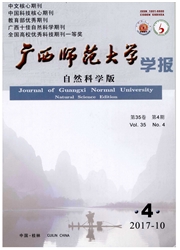

 中文摘要:
中文摘要:
随着电力需求的日益增加,将会有越来越多的分布式电站接入到电力网络中。为了研究不同的分布式电站入网方式对电力网络动态特性的影响,文章采用二阶Kuramoto模型对电网节点进行建模和动力学仿真,分析比较了两种不同的分布式电站的入网方式对电网的同步性能和抗扰性的影响。第一种入网方式是令新增分布式电站分别与原网络负载节点中小度节点相连(称为sDJ方式),第二种是令新增分布式电站分别与原网络负载节点中的大度节点相连(称为LDJ方式)。研究表明,SDJ和LDJ方式均可以有效地提升网络的同步门限,SDJ更能提升网络的同步性能。当分布式电站数量较多时,采用SDJ方式连接的电力网络,其抗扰性更强,受到功率干扰后系统恢复稳定状态的时间更短。此研究可以为我国未来分布式电网的设计和规划提供一定参考。
 英文摘要:
英文摘要:
With increasing demand of electric power, more and more distributed generations will be integrated into the power grid. In order to study the influences of two different connected strategies on the dynamic characteristics of power grid, this paper uses a second-order Kuramoto model as a node model of the power grid to compare the synchronous ability and transient stability of two kinds connected strategies in IEEE30 bus, IEEE57 bus, and IEEE162 bus system. The first strategy is that the distributed generations are connected to the load nodes with smaller degree (SDJ), while the second is an opposite strategy, the distributed generations are connected to the load nodes with larger degree (LDJ). The study shows that both of the two kinds of strategies can reduce the threshold of synchronization and the SDJ strategy can improve the synchronous ability better than the LDJ strategy. Moreover, with more distributed generations, the network which connected with SDJ strategy will be more robust against the perturbations and can recover to steady states quickly. The study provides a reference for the design of the distributed power grid.
 同期刊论文项目
同期刊论文项目
 同项目期刊论文
同项目期刊论文
 期刊信息
期刊信息
